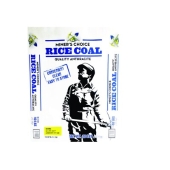


Rocket Mass Heater Plans: Annex 6" L-shaped Bench by Ernie and Erica
will be released to subscribers in:
05 : 35 : 11







Medicinal herbs, kitchen herbs, perennial edibles and berries: https://mountainherbs.net/ grown in the Blue Mountains, Australia




"Study books and observe nature; if they do not agree, throw away the books." ~ William A. Albrecht
 1
1




A human being should be able to change a diaper, plan an invasion, butcher a hog, conn a ship, design a building, write a sonnet, balance accounts, build a wall, set a bone, comfort the dying, take orders, give orders, cooperate, act alone, solve equations, analyze a new problem, pitch manure, program a computer, cook a tasty meal, fight efficiently, die gallantly. Specialization is for insects.
-Robert A. Heinlein




"People may doubt what you say, but they will believe what you do."





List of Bryant RedHawk's Epic Soil Series Threads We love visitors, that's why we live in a secluded cabin deep in the woods. "Buzzard's Roost (Asnikiye Heca) Farm." Promoting permaculture to save our planet.








James Freyr wrote:it will increase a soils Cation Exchange Capacity
Chris Kott wrote:
Most users of biochar, though, consider it critical that the biochar be innoculated in a living compost heap.
Chris Kott wrote:
I would actually love some verification on this next point. I was wondering about the biochar's direct effect on soil pH.
Chris Kott wrote:
But isn't carbon one of the most promiscuous elements? Doesn't it bond with, like, any other element?
Bryant RedHawk wrote:
Biochar is "activated" charcoal
Redhawk
Bryant RedHawk wrote:
Biochar is one way of adding carbon (sequestering) to soil, since it is in a solid form, it will take a long time for bacteria and other organisms to break it down thus releasing the carbon.
The one exception is when an organism eats the charcoal which means they will expel some CO2 as they breathe and they will excrete some carbon when they poop.
Redhawk
Bryant RedHawk wrote:
While biochar can and will work in most soils, it was most extensively used in very poor clay dominant soils in the past (which is how we rediscovered it in south America).
Redhawk




"The rule of no realm is mine. But all worthy things that are in peril as the world now stands, these are my care. And for my part, I shall not wholly fail in my task if anything that passes through this night can still grow fairer or bear fruit and flower again in days to come. For I too am a steward. Did you not know?" Gandolf




Marco Banks wrote:It will not be some kind of instant miracle additive, but over the long term, biochar is one part of building healthy soil.




Permaculture...picking the lock back to Eden since 1978.
Pics of my Forest Garden




Permaculture...picking the lock back to Eden since 1978.
Pics of my Forest Garden




Medicinal herbs, kitchen herbs, perennial edibles and berries: https://mountainherbs.net/ grown in the Blue Mountains, Australia
















 1
1




I think you need to be more careful about your use of the word "activated". Activated charcoal does not simply mean "it's got microbes on it" - it's a proper scientific term that describes an additional heating process the charcoal has undergone which opens up additional pores, changing the nanoscopic structure of the charcoal. Activated charcoal is what is used in professionally manufactured water and air filters, and also medicines:
https://en.wikipedia.org/wiki/Activated_carbon#Production
List of Bryant RedHawk's Epic Soil Series Threads We love visitors, that's why we live in a secluded cabin deep in the woods. "Buzzard's Roost (Asnikiye Heca) Farm." Promoting permaculture to save our planet.




Bryant RedHawk wrote:Biochar is "activated" charcoal, if you just make the charcoal and put it into the soil, it will take time for the microorganisms to take up residence at which point it becomes biochar.
















List of Bryant RedHawk's Epic Soil Series Threads We love visitors, that's why we live in a secluded cabin deep in the woods. "Buzzard's Roost (Asnikiye Heca) Farm." Promoting permaculture to save our planet.




















List of Bryant RedHawk's Epic Soil Series Threads We love visitors, that's why we live in a secluded cabin deep in the woods. "Buzzard's Roost (Asnikiye Heca) Farm." Promoting permaculture to save our planet.




















List of Bryant RedHawk's Epic Soil Series Threads We love visitors, that's why we live in a secluded cabin deep in the woods. "Buzzard's Roost (Asnikiye Heca) Farm." Promoting permaculture to save our planet.




Bryant RedHawk wrote:
Build your TLUD with a removable "choker" plate, that is a restrictor plate for the "chimney", that way you will get a more complete burn and limit the O2 enough to get the micropores to clear of resinous residues.
Bryant RedHawk wrote:
Keep in mind that with char, the longer you leave it to inoculate, the better and more complete the inoculation will be.
















List of Bryant RedHawk's Epic Soil Series Threads We love visitors, that's why we live in a secluded cabin deep in the woods. "Buzzard's Roost (Asnikiye Heca) Farm." Promoting permaculture to save our planet.
















 1
1




List of Bryant RedHawk's Epic Soil Series Threads We love visitors, that's why we live in a secluded cabin deep in the woods. "Buzzard's Roost (Asnikiye Heca) Farm." Promoting permaculture to save our planet.
 1
1































List of Bryant RedHawk's Epic Soil Series Threads We love visitors, that's why we live in a secluded cabin deep in the woods. "Buzzard's Roost (Asnikiye Heca) Farm." Promoting permaculture to save our planet.




Medicinal herbs, kitchen herbs, perennial edibles and berries: https://mountainherbs.net/ grown in the Blue Mountains, Australia
















List of Bryant RedHawk's Epic Soil Series Threads We love visitors, that's why we live in a secluded cabin deep in the woods. "Buzzard's Roost (Asnikiye Heca) Farm." Promoting permaculture to save our planet.

|
I did NOT cry! It was this tiny ad that cried. The tiny ad is a crier, not me.
Learn Permaculture through a little hard work
https://wheaton-labs.com/bootcamp
|


